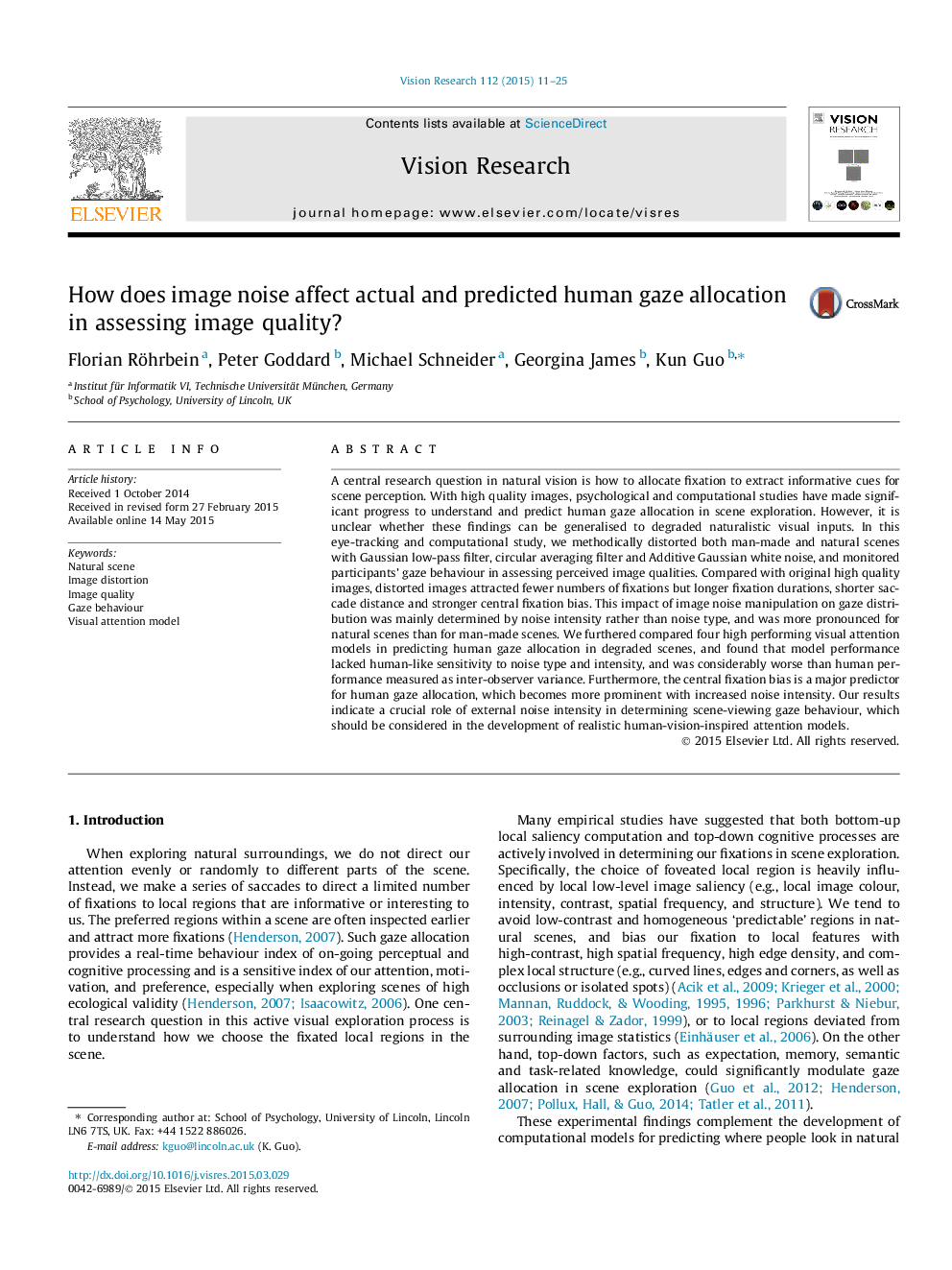| کد مقاله | کد نشریه | سال انتشار | مقاله انگلیسی | نسخه تمام متن |
|---|---|---|---|---|
| 4033658 | 1603184 | 2015 | 15 صفحه PDF | دانلود رایگان |
• External noise reduces perceived image quality and affects gaze pattern.
• Noisy images attract stronger central fixation bias.
• Noise intensity has bigger impact than noise type.
• Visual saliency models lack human-like sensitivity to noise.
A central research question in natural vision is how to allocate fixation to extract informative cues for scene perception. With high quality images, psychological and computational studies have made significant progress to understand and predict human gaze allocation in scene exploration. However, it is unclear whether these findings can be generalised to degraded naturalistic visual inputs. In this eye-tracking and computational study, we methodically distorted both man-made and natural scenes with Gaussian low-pass filter, circular averaging filter and Additive Gaussian white noise, and monitored participants’ gaze behaviour in assessing perceived image qualities. Compared with original high quality images, distorted images attracted fewer numbers of fixations but longer fixation durations, shorter saccade distance and stronger central fixation bias. This impact of image noise manipulation on gaze distribution was mainly determined by noise intensity rather than noise type, and was more pronounced for natural scenes than for man-made scenes. We furthered compared four high performing visual attention models in predicting human gaze allocation in degraded scenes, and found that model performance lacked human-like sensitivity to noise type and intensity, and was considerably worse than human performance measured as inter-observer variance. Furthermore, the central fixation bias is a major predictor for human gaze allocation, which becomes more prominent with increased noise intensity. Our results indicate a crucial role of external noise intensity in determining scene-viewing gaze behaviour, which should be considered in the development of realistic human-vision-inspired attention models.
Journal: Vision Research - Volume 112, July 2015, Pages 11–25
